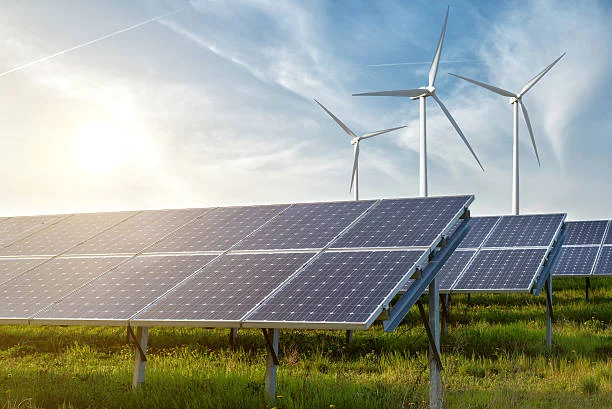Philippines’ National Renewable Energy Program: The Role of Energy Storage in Achieving 2040 Targets
2025-05-12
In the interest of decarbonization and meeting demand, the Philippines' NREP targets 50% renewables in the power mix by 2040, thereby requiring over 52 GW of new capacity—from 27 GW solar, 17 GW wind, 6 GW hydro, 2.5 GW geothermal, and 364 MW biomass. The DOE has thus undertaken successive RESA projects to handle large-scale integration of intermittent sources-with GEA rounds for solar-plus-battery storage requiring a minimum of four-hour duration from new battery energy storage systems. To scale up, the landscape is dotted with landmark initiatives such as the 4.5 GWh Terra Solar BESS and PDA's 330 MW of ESS projects in Luzon and Mindanao, while pioneering Philippine RES-storage actions include pumping hydro licenses for Pakil (1,400 MW) and Wawa (600 MW) for long-duration firming. Augmenting the mix on a smaller scale would be modular solutions such as Huijue's Outdoor Energy Storage Converter, providing a quick-deploy portable option to remote areas with advanced EMS capabilities for grid services and islanded operation. Meeting the 2040 goals will necessitate regulatory fine-tuning, strong finance, and innovation capacity in overcoming high CapEx, interconnection, and operational reliability constraints.

Audience and Content Analysis
This blog evolved for:
- Policy Makers & Regulators, requiring a look into NREP targets, storage mandates, and grid-code modifications supporting the National Renewable Energy Program.
- Investors & Financial Analysts, needing to know projected market sizes, LCOS values, and ROI from major storage tenders for GEA-4 and the Terra Solar project.
- Project Developers & EPC Contractors, requiring technical knowledge for containerized BESS deployment, pumped hydro feasibilities, and BESS design under Philippine conditions.
- Consultants & Grid Operators, interested in integration challenges of energy storage projects into the Philippines,SCADA-EMS interoperability, and best practices for grid stability in events of high renewable penetration.
To keep these audiences interested and groomed for Google algorithms, we fill the text with conversational analogies such as calling storage “the grid’s shock absorber,” followed by clear H2/H3 headings, bullet points, and an optimum keyword density (National Renewable Energy Program: 3-5%).
Philippine National Renewable Energy Program Overview
Targets to 2040
- 50 % Renewable Capacity by 2040: NREP envisages new capacity additions of 52.83 GW-from 27 GW solar, 17 GW wind, 6 GW hydro, 2.5 GW geothermal, and 364 MW biomass-to give these renewables around 50 percent in the power mix and a 35 percent reduction in CO₂ emissions with respect to the so-called business-as-usual.
- Living document: DOE updates its forecasts and targets periodically to incorporate changes in policy, costs of technology advancement in projects.
Key Policies & Auctions
Green Energy Auction ("GEA"): From GEA-4, the DOE requires paired storage for solar projects, with the minimum storage duration of four hours set as a dispatchable resource to support the grid.
Feed-in Tariffs & Net Metering: Incentive schemes for utility-scale and distributed solar plus storage projects help de-risk investments and encourage participation of the private sector.
The Role of Energy Storage in Achieving Objectives
Grid Stability & Flexibility
- Intermittency Smoothing: BESS soaks up solar PV volatility, flattening the duck curve and reducing curtailment during peak sun hours.
- Ancillary Services: Storage participates in frequency regulation, spinning reserve, and black-start services, contributing reliability to Luzon, Visayas, and Mindanao grids.
Peak Shaving & Arbitrage
- Cost Management: With discharge during evening peaks, BESS lowers demand charges for industrial and commercial consumers, improving tariff predictability.
- Revenue Stacking: Projects earn revenue from energy arbitrage, capacity payments, and ancillary markets, which improves financial viability.
Big Energy Storage Projects & Innovations
Terra Solar – 3,500 MW PV + 4,500 MWh BESS
- World's Largest Integrated Project:BOI brought forward the Terra Solar project, marrying mega-scale PV with battery storage to deliver 4,500 MWh of capacity, supported by Manila Electric's recent Actis financing.
DOE Tenders – 9.4 GW Renewables + Storage
- GEA-4 Auction: Bidding over 9 GW of capacity with mandatory BESS, targeting 1,100 MW of solar-plus-storage to boost system flexibility.
Pumped Hydro – Wawa & Pakil
- Long-Duration Storage: DOE specified the 1,400 MW Wawa PSH and 600 MW Pakil projects as critical to provide firming by seasons and multi-hours.
Product Focus: Huijue's Outdoor Energy Storage Converter
- Portable & Rugged: Designed for the Philippines' being an archipelago, this converter offers 100 kW–200 kW outputs, combined BESS and PV in single skid.
- Advanced EMS: AI-powered dispatch, real-time monitoring, and grid-forming mode offer islanded operation support for isolated islands and off-grid municipalities.
- Rapid Deployment: Plug-and-play connectivity reduces commissioning time, ideal for disaster-response and temporary power needs.
Challenges & Way Forward
1. High CapEx & Finance
- Despite lowering battery prices, project capex (USD 300–500/kWh) needs to be made financeable by blended finance—green bonds, concessional loans.
2. Grid Interconnection Bottlenecks
- Limited transmission capacity and completion of full interconnection queues lead to project COD delays; upgrades and efficient studies are the priority.
3. Regulatory & Market Design
- Licensing clarity for fusion energy storage, market participation regulations, and tariff convergence across grids need to improve to enable maximum value.
4. Operational Reliability
- Sustaining BESS operation in tropical heat and humidity requires robust thermal management and maintenance systems.
By combining diverse storage technologies—from massive pumped hydro to containerized BESS and mobile converters—into the National Renewable Energy Program, the Philippines is charting the path for reaching its 2040 renewable targets, improving grid resilience, and achieving socio-economic dividends for its islands and communities.
